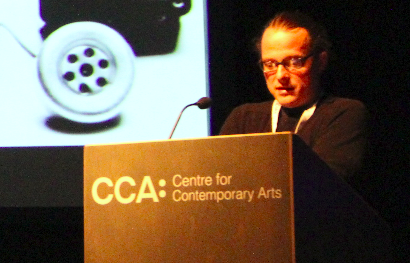Paper: ‘LET’S TALK BUSINESS’ – Narratives used in email and phone scams
Title: ‘Let’s talk business’ – Narratives used in email and phone scams
Author(s): Andreas Zingerle
Email: andreas.zingerle (at) ufg.ac.at
Published at: xCoAx conference 2015, Glasgow, UK.
Abstract:
16th century ‘face to face’ persuasion scams adopted to letters, telephone, fax and Internet with the development of new communication technologies. In many of today’s fraud schemes phone numbers play an important role. Various free-to-use on-line tools enable the scammers to hide their identities with fake names, bogus business websites, and VoIP services. These fake businesses or personas can appear more legitimate when connected to a phone number, enabling a faster, more personal contact to the victims. With the typology of a sample probe of 374 emails, commonly used in business proposal scams, the emails were categorized and tested to see how believable the proposals sound once the scammers were contacted by phone. The research can be explored in a 5-channel interactive audio installation called ‘Let’s talk business’ that uncovers which business proposals and scam schemes are commonly used, and how believable the proposals sound once the scammers are called.
Keywords: phone scams, audio installation, interactive storytelling, reverse engineering, artivism.
A poster was created for ISEA 2015
A poster paper was published in the ISEA 2015 proceedings
References:
!Mediengruppe Bitnik, Opera calling, www.opera-calling.com
Area 419 – Scambaiting radio, www.blogtalkradio.com/area419
Art by telephone, www2.mcachicago.org/event/chf-art-by-telephone-and-other-adventures-in-conceptualism/
Afshar, Brunnthaler, Schulze, ‘The evidence of things not said’, www.derbeweis.at/
Colacello, Bob, Holy Terror: Andy Warhol Close Up. Random House LLC, 2014.
Costin, Andrei, et al. ‘The role of phone numbers in understanding cyber-crime schemes.‘ Privacy, Security and Trust (PST), 2013 Eleventh Annual International Conference on. IEEE, 2013.
Kac, Eduardo, ‘Aspects of the Aesthetics of Telecommunications.‘ International Conference on Computer Graphics and Interactive Techniques: ACM SIGGRAPH 92 Visual Proceedings. Vol. 1992. 1992.
Rustad, Michael L., ‘Private enforcement of cybercrime on the electronic frontier.‘ S. Cal. Interdisc. LJ 11 (2001): 63.
Stajano, Frank, and Paul Wilson, ‘Understanding scam victims: seven principles for systems security.‘ Communications of the ACM 54.3 (2011): 70-75.
Maggi, Federico, ‘Are the con artists back? A preliminary analysis of modern phone frauds.‘ Computer and Information Technology (CIT), 2010 IEEE 10th International Conference on. IEEE, 2010.
Mitnick, Kevin D, The Art of Deception. Wiley, 2002.
Lapsley, Phil. Exploding the phone: The untold story of the teenagers and outlaws who hacked Ma Bell. Grove Press, 2013.
Smith, Terri, http://terricsmithitsforyouartandtelephone.blogspot.co.at/
Templeton, Brad, Origin of the term ‘spam’ to mean net abuse, www.templetons.com/brad/spamterm.html
Young, Carey, ‘The representative’, www.careyyoung.com/past/therepresentative.html

